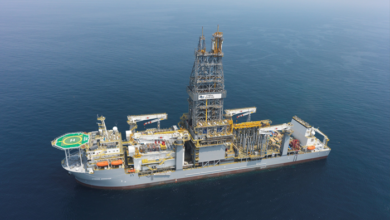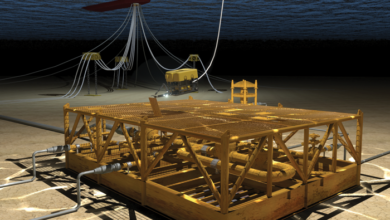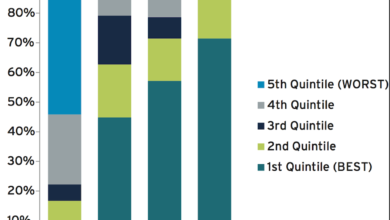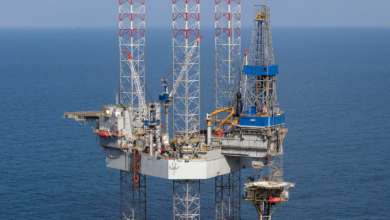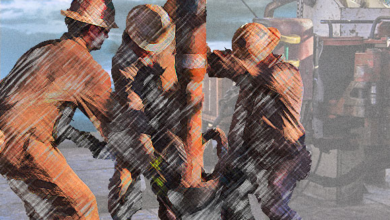Advanced MPD control system builds in ‘what-if’ visualization to facilitate real-time decisions
Live wellbore displays, automated data analysis help to reduce human error
By Don Hannegan, Azfar Mahmood, Weatherford
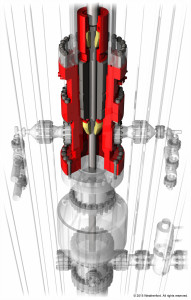
Managed pressure drilling (MPD) techniques have steadily evolved as the offshore standard for well integrity management, largely because they can enable near-instantaneous application of surface backpressure to control wellbore pressures and because they deliver unparalleled early kick/loss detection and control.
Based on its record of mitigating and preventing hazards intrinsic in ultra-narrow, shifting and relatively unknown safe drilling margins, MPD is moving into the mainstream for offshore well construction. Key to the growing popularity of driller-verified MPD is the automated management and control of the wellbore pressure profile to enable constant well control to TD, which enables operators to safely drill nearer balanced with immediate detection and suppression of influx.
Complementing the hardware in a closed-loop offshore MPD configuration, next-generation control software provides the driller with an interactive “what-if” roadmap that optimizes efficiency by simulating, for example, the effects of surface backpressure on equivalent mud weight (EMW) during drilling and connections. After a kick is detected, the intelligent control unit instantaneously provides the driller with a visual response to open questions, such as the extent of the influx and its precise location in the annular returns path. Although early kick and loss detection is emblematic of MPD, the capacity to spontaneously conduct formation integrity and leak-off tests, quantify and virtually eliminate ballooning, accomplish closed-loop cementing and complement wellbore strengthening augments its comprehensive well integrity management portfolio.
Automation at its finest
The principal behind automated MPD is the immediate application of annular surface back pressure (SBP) to control bottomhole pressure (BHP) and compensate for the annular pressure fluctuations that occur when the mud pumps are switched on and off. Compared with conventional open-to-atmosphere circulating mud systems, a core differentiator of fully automated MPD is real-time acquisition of mass flow-in versus flow-out data. Although MPD is recognized mainly for drilling trouble zones on difficult wells, its real-time monitoring and control of BHP and EMW (alternatively referred to as equivalent circulating density, or ECD) make it a viable option for enhancing operational safety and drilling efficiencies on otherwise conventionally designed drilling programs.
Of the four MPD variants used offshore, the constant bottomhole pressure (CBHP) and returns flow control for HSE (RFC-HSE) considerations are most applicable for well integrity management in the Gulf of Mexico. The CBHP MPD variant is engineered with protocols specific for narrow drilling windows in which the safe drilling margin is relatively unknown and SBP may be required for connections. The RFC-HSE MPD variant is used for drilling with a conventionally designed fluids program with no intent to apply SBP. Instead, the objectives include ascertaining safe drilling margins, detecting early kick/loss, distinguishing ballooning from losses/breathing from influx, and reducing instances of false positive kick alarms.
The rotating control device (RCD) is the primary enabling technology for any offshore closed-loop MPD system. By sealing the top of the annulus, the RCD provides a pressure-tight barrier, which in tandem with the closed-loop configuration, diverts returning fluids from the rig floor. The automatic choke manifold applies the desired SBP to control mud flow from the well.
Complementing hardware, next-generation MPD software automatically integrates the surface and downhole pressure sensors in a real-time MPD data acquisition and process network. The control system responds instantly to wellbore signals to enable the driller to detect and contain incidents before they deteriorate into a well control risk. The control system also allows onsite and remote monitoring of flow-in and flow-out, and the data displays are equally beneficial when circulating or static. By completely automating the most critical drilling parameter within the circulating system, namely pressure, advanced MPD technology effectively fortifies the primary well control barrier.
This capability is essential as operators target less understood horizons, where pore pressure and fracture gradients may have been modeled from seismic data acquired years earlier. Ensuing wide margins of error in predictive pre-drill estimates become problematic when designing well and mud programs that may encounter high-pressure, high-temperature (HPHT) zones with unexpected and upward migrating pressures.
Instant EMW increases
Properly formulating a drilling fluid with density and a rheological profile based on then-available sedimentary data means little when unexpected pressure spikes require increasing EMW. In open-to-atmosphere circulating systems, controlling these unforeseen pressure steps requires increasing the speed of mud pumps that may already be running at near maximum capacity.
On the other hand, once the automated MPD system has detected annular returns, it applies surface backpressure, essentially at the speed of sound, to increase the downhole EMW.
Ballooning/breathing signatures
Most kicks occur during the intermittent static and circulation periods of jointed pipe connections. Upon mud pump shutdown, it is critical to distinguish wellbore breathing from the beginning of a kick. Typically, this is accomplished by a time-consuming flow check, but the ability to identify at the onset whether the well is flowing or just breathing back ballooning volume can expedite connections. It is equally important to distinguish ballooning from losses when the mud pumps start up.
Distinctive flow signatures are exhibited when the pumps are turned off and when circulation resumes. If the flow signature reveals that the well is simply flowing back (breathing), the connection can proceed without a flow check. Along with reducing downtime, this procedure should be an integral component of the process safety program, most applicable when practicing the RFC-HSE variant of MPD with a conventional mud program. The CBHP variant essentially eliminates ballooning/breathing by avoiding the pumps on-off pressure fluctuations the phenomenon requires.
On-the-fly FIT
Borrowing from its process industry roots, where every pressure vessel must undergo a fit-for-purpose proof test before a new use, the automated MPD system essentially treats each foot drilled as a new pressure vessel. In an automated MPD application, the proof test takes the form of dynamic formation integrity tests (FIT), which may be recommended for every stand that enters expected trouble zones. Conducting a FIT conventionally requires downtime, but a closed-loop automated MPD system can perform this proof test more frequently, reliably and without incurring nonproductive time.
For perspective, assume the driller requested a test-to value of 15.75 lb/gal EMW. The dynamic FIT would be conducted by incrementally increasing SBP, usually in 25-psi increments, during circulation until that value was achieved without incurring losses. On the other hand, assume the driller requested a 14.8 lb/gal test-to value, but losses were seen before achieving that wellbore pressure integrity. Although not the most welcomed outcome, knowing that the well integrity is less than expected gives the operator time to make adjustments to subsequent operations, such as drilling deeper, casing running speed, and/or cementing sequences to avoid inducing losses.
Interactive kick response
The aforementioned “what-if” interactive scenarios built into the latest generation of the MPD control system deliver live-wellbore displays and automated data analysis that reduce human error while facilitating real-time decision making to optimize drilling efficiencies. The benefits of the visualization built into the advanced software platform are especially pronounced immediately after detecting a kick.
The visualization element displays conclusive answers to critical questions that dictate whether it is safe to drill ahead or shut-in. The real-time display illustrates, for example, the on-bottom kick volume and the volume expected at surface, the fluid composition, expected pressures at the casing shoe and at other critical points, and the length of the kick and resultant pressure changes.
One of the most illuminating responses focuses on how much, if any, of the omnipresent gas volume in the riser is actually dissolved in the returns path and, if so, what are the bubble point pressure and the resulting expansion factor if the gas begins to travel to the top of the riser. By employing the next-generation MPD software, a conclusive determination can be made on how much of the kick is actually dissolved and whether it is likely or not to present a drilling risk. Once the driller has detected the kick, determined its intensity and suppressed the influx, the safest approach may be to actually continue circulating and drilling ahead.

